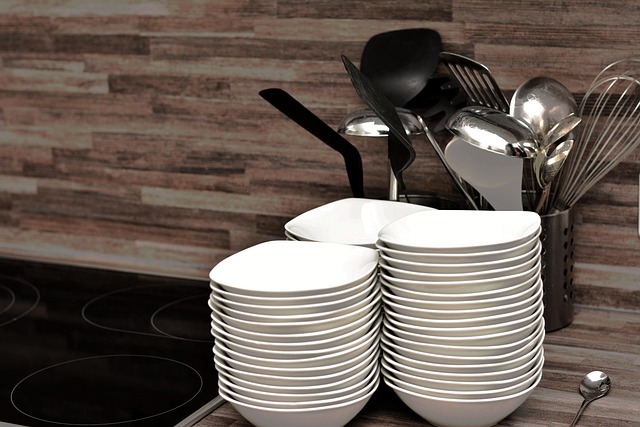Eco-friendly kitchen remodeling focuses on sustainability through material selection, energy-efficient appliances, water conservation, smart storage, and durable countertops. Key elements include low-flow fixtures, Energy Star rated appliances, recycled materials for cabinets and countertops, and maximizing natural light and ventilation to reduce energy consumption. These strategies not only preserve natural resources but also enhance design and create healthier living spaces, contributing to broader ecological conservation efforts.
“Discover the future of sustainable living with water-saving, eco-focused kitchen designs. As we navigate an era of environmental awareness, remodeling your kitchen can be a powerful statement. This article explores the core principles behind eco-friendly design, from efficient fixtures and appliances to the selection of sustainable materials for cabinets and countertops. We’ll also delve into strategies for maximizing natural light and ventilation, offering you a comprehensive guide for an environmentally conscious kitchen remodel.”
- Understanding Eco-Friendly Kitchen Design Principles
- Water-Efficient Fixtures and Appliances
- Sustainable Materials for Cabinets and Countertops
- Maximizing Natural Light and Ventilation
Understanding Eco-Friendly Kitchen Design Principles
Eco-friendly kitchen design focuses on creating spaces that are both functional and sustainable, aligning with the broader goals of environmental conservation. At its core, this approach involves selecting materials, appliances, and fixtures that minimize ecological impact. For instance, opt for energy-efficient appliances that consume less power, and choose waterproof and durable materials for countertops and flooring to reduce waste from frequent replacements.
Integrating water-saving mechanisms is another key aspect of eco-friendly kitchen design. This can include installing low-flow faucets and showerheads, as well as utilizing dual-compartment sinks for efficient washing. Smart storage solutions that maximize space also contribute to sustainability by reducing the need for frequent purchases of new containers or appliances. Ultimately, eco-friendly kitchen remodeling is about making conscious choices that balance aesthetics with environmental responsibility.
Water-Efficient Fixtures and Appliances
In an eco-focused kitchen, water-efficient fixtures and appliances play a pivotal role in achieving sustainability goals. These innovative designs incorporate advanced technologies to minimize water consumption without compromising functionality or performance. From low-flow faucets that reduce water usage without affecting pressure to energy-star rated dishwashers that use less water per load, these features are not just environmentally conscious choices but also sensible investments for eco-friendly kitchen remodeling.
Smart washing machines equipped with load sensors and water-saving settings further enhance efficiency by using only the necessary amount of water based on the load size. Additionally, consider recycled or low-flow showerheads that offer powerful yet gentle water streams, significantly reducing water waste. Integrating these water-efficient appliances into your kitchen design not only contributes to conservation efforts but also aligns with the broader trend of sustainable living, making your space both practical and environmentally responsible.
Sustainable Materials for Cabinets and Countertops
When it comes to eco-friendly kitchen remodeling, choosing sustainable materials for cabinets and countertops is a significant step towards reducing your environmental footprint. Opting for recycled or reclaimed wood not only gives your space a unique character but also cuts down on demand for new timber, preserving natural resources. Similarly, surface materials like bamboo, linoleum, or recycled glass and metal offer both style and sustainability. These options are durable, low-maintenance, and often have a lower carbon footprint than traditional materials, aligning perfectly with the goals of water-saving and eco-focused kitchen designs.
Additionally, many modern manufacturers now offer cabinets and countertops made from innovative, plant-based composites or upcycled materials, further expanding the range of eco-friendly choices available to homeowners. Incorporating these sustainable materials into your kitchen design not only contributes to environmental conservation but also ensures that your space is both functional and aesthetically pleasing, reflecting your commitment to a greener lifestyle.
Maximizing Natural Light and Ventilation
In eco-friendly kitchen remodeling, maximizing natural light and ventilation isn’t just about aesthetics; it’s a key strategy to reduce energy consumption and create a healthier living space. Large windows, skylights, or light tubes can significantly enhance daylight ingression, minimizing the need for artificial lighting during the day. This simple yet effective approach not only reduces electricity bills but also contributes to a more positive environment.
Proper ventilation is equally vital. Well-designed kitchen vents help remove steam, odors, and pollutants, ensuring better air quality. Additionally, incorporating energy-efficient fans or extracting hoods can further enhance ventilation without compromising the room’s eco-friendliness. By harnessing natural light and maintaining optimal air circulation, these practices align with sustainable living principles while creating a more comfortable and inviting kitchen space.
Incorporating water-saving and eco-focused designs into your kitchen not only reduces environmental impact but also offers functional benefits, such as cost savings on utility bills. By adhering to principles like using water-efficient fixtures and appliances, selecting sustainable materials, maximizing natural light and ventilation, and embracing eco-friendly kitchen remodeling techniques, you can create a beautiful, efficient, and environmentally conscious space that contributes to a greener future.
